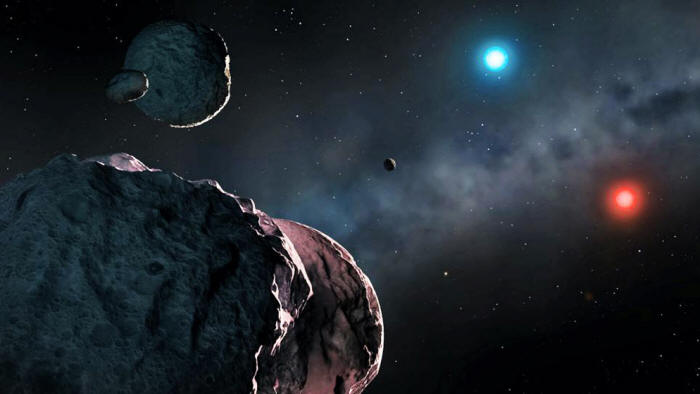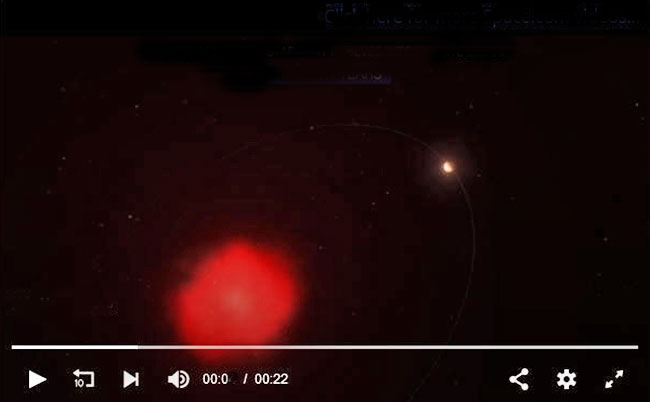|
with the two white dwarfs, the blue WDJ1922+0233 and the red WDJ2147-4035. (Image credit: University of Warwick
Dr Mark Garlick.) further evidence that rocky planets were able to form in abundance in the distant past.
The star is a so-called white dwarf, a stellar corpse that ran out of hydrogen fuel in its core.
Born as a regular star 10.7 billion years ago (only 3 billion years after the Big Bang), the stellar corpse, named WDJ2147-4035, is one of two white dwarfs polluted by planetary debris that have been newly discovered in data collected by the European Space Agency's Gaia galaxy-mapping mission.
Although they are not the first white dwarfs found to be accreting rubble from an apparent planetary demolition derby, they are the oldest and therefore provide keen insights into the composition of planets that formed when the universe was less than 3 billion years old.
In the case of WDJ2147-4035, its progenitor star was more massive than the sun, but not massive enough to explode as a supernova at the end of its life.
Instead, half-a-million years after its formation, or about 10.2 billion years ago, the star ran out of hydrogen fuel for nuclear fusion in its core and swelled up to become a red giant.
It then puffed off its outer layers to expose its inert helium-rich core — a white dwarf.
With the gravitational fields in flux as the star evolved through its red giant phase, some of the orbiting planets were either destroyed or disrupted, while others may have survived intact.
Either way, the disturbances resulted in large amounts of orbiting planetary debris that has since been falling onto the white dwarf.
Astronomers led by Abigail Elms, who is a PhD student at the University of Warwick in the U.K., used measurements of light spectra from
...to analyze the chemical composition of the red-colored WDJ2147-4035, and the second white dwarf, WDJ1922+0233, which appears blue.
The results show a surprising diversity of planetary compositions.
Blue WDJ1922+0233, which gets its color not from its temperature but by the unusual mixing of gases in its helium-hydrogen atmosphere, is apparently being polluted by material similar in composition to that of Earth's continental crust.
The red WDJ2147-4035 is more of a puzzle.
It is being enriched by lithium, potassium, sodium and a tentative detection of carbon accreting onto the white dwarf.
Either way, the findings provide further evidence that rocky planets were able to form in abundance in the distant past, despite heavy elements being less common in the universe at that time, since those elements needed to be built up by each generation of stars.
The research (Spectral Analysis of Ultra-cool White Dwarfs polluted by Planetary Debris) was published in the Nov. 5 issue of Monthly Notices of the Royal Astronomical Society...
|



